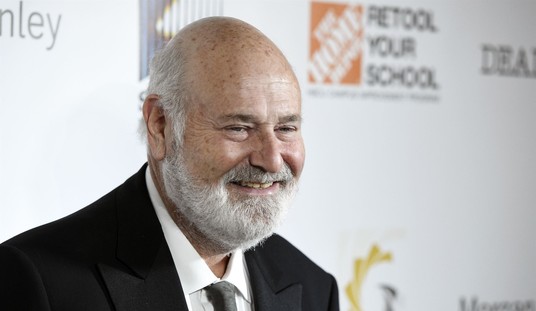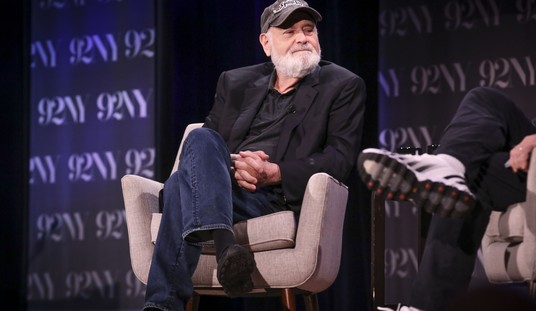Don't be fooled by the everything's-coming-up-roses coverage that the national news media gave the Obama administration's job numbers last week.
The news headlines said the Obama economy created 321,000 jobs last month, according to the U.S. Bureau of Labor Statistics. But a little closer examination of the other numbers, buried in the BLS report, tells a far sadder story.
A large share of the nonfarm employment figures were low-paying, part-time jobs among Americans who the BLS refers to as "involuntary part-time workers." They're people "who would have preferred full-time employment" but were "working part time because their hours had been cut back or because they were unable to find a good full-time job," the government said.
There were seven million of these people for whom life in the dreary Obama economy has changed very little, and their numbers "changed little in November," BLS said deep into its report.
But if the number of jobs rose by 321,000, shouldn't the unemployment percentage have fallen in November? No, the number of jobless Americans "was little changed at 9.1 million" and the 5.8 percent rate didn't budge.
Did you hear it put just that way on the nightly network news shows last week? No? I didn't think so. But it gets worse.
The unemployment rate for adult men actually "rose to 5.4 percent in November," BLS said. And the jobless rates for adult women (5.3 percent), working age teenagers (17.7 percent), blacks (11.1 percent), and Hispanics (6.6 percent) showed "little change over the month."
And what about the long-term unemployed that we've heard so much about under Barack Obama's presidency? These people, who've been jobless for 27 weeks or more, was also "little changed" at nearly three million last month, making up nearly 31 percent of the nation's unemployed.
Then there were 2.1 million other Americans who BLS tells us were "marginally attached to the labor force." That is to say, they desperately needed a job and had looked for one at some point in the past 12 months.
Recommended
But the government doesn't consider them unemployed and they're uncounted, keeping the jobless rate lower than it would be if they were added to the figures.
There were 700,000 "discouraged workers" among this group who had totally given up looking for a job and went uncounted.
In the 1980s, the Democrats were attacking President Reagan's handling of the economy, which came roaring out of a deep recession in just two years, charging that the millions of jobs being created went to low paid "hamburger flippers."
But BLS now says a large portion of the jobs created last month (50,000 of them) were in the low paying retail trade. Jobs in restaurants and bars were up by 27,000 in November, too, and by 321,000 over the year.
But you don't hear a peep of complaint from House Democratic leader Nancy Pelosi or Senate Democratic leader Harry Reid about these minimum wage jobs.
What the news media rarely mentions is that the BLS determines its employment numbers in two surveys. The jobs count "is based on the survey of employers, whereas unemployment is based on a direct household survey," University of Maryland business economist Peter Morici points out.
"The latter indicated many fewer jobs gains and the and the [labor force] adult participation rate… stayed depressed," he points out.
Meanwhile, wages remain largely flat and, equally disturbing, hours worked are being cut back. The average workweek for all employees in private non-farm payrolls increased by a paltry 0.1 hour to 34.6 hours, says BLS.
Wages were estimated to rise by just 0.3 percent in this fourth quarter, says Payscale, a company that gathers and analyzes salary data.
Younger workers are having a particularly hard time in today's economy. They're far more educated than earlier generations. "But they're also less likely to have a job, and more prone to be living in poverty," Jonnelle Martin writes this week in the Washington Post.
A "typical 18-to-34-year-old makes $2,000 less annually compared with younger workers in 1980," according to U.S. Census data, she writes.
Millennials and other younger adults fell for Obama's economic flimflam in 2008 and 2012, but not anymore. The Gallup Poll's editor-in-chief Frank Newport says the president's job approval rating in 2014 plunged to 34 percent among white 18-to-29-year-olds.
Yes, economic growth was up significantly in the second and third quarters, averaging 4.2 percent. But Morici and other forecasters warn that "the outlook remains guarded."
Orders to U.S. factories declined for the third straight month in October, down by 0.7 percent, an ominous sign of a uneven economy. Far fewer Americans are signing mortgage applications.
Black Friday, one of the major Thanksgiving retail sales weekends, turned out to be a bust. Weekend sales fell by about 11 percent from 2013. And there are growing signs that consumers were tightening their belts as they headed into the Christmas shopping season.
In an online survey of Americans by CNBC's business channel this week that asked asked what they planned to do their savings from lower gas prices, only 8 percent said "spend more."
Forecasters "expect the pace of [economic growth]… to moderate to between 2.5 percent and 3 percent going forward, indicating the surge in job growth could be short lived," Morici says.
So be very wary of the average national unemployment numbers coming out of the BLS. Most Americans don't live in the world of national averages, but in the state by state numbers which are far bleaker.
Six years into Obama's presidency, nine states, among the most populated, were still struggling with jobless rates between 7 and 7.7 percent. They were at or well above 6 percent in nearly a dozen more.
We're still in an underperforming economy that's been struggling through the longest recovery since the Great Depression. And that should be in the headlines and lead the nightly news.

























Join the conversation as a VIP Member